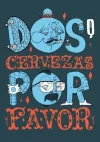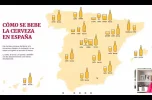We learnt the "do not touch the fruit" early on and had got used to pointing at what we'd like.
Then in one shop, after pointing at some tangerines ( or some such variety of small oranges )
the shop keeper shook his head and in a furtive manner led us to the back of the shop where
he unveiled a box of individually wrapped tangerines. He then launched into a long spiel which
we guessed was related to the superiority of these fruit over the others. We left with six of them.
Never before or since have I seen individually wrapped tangerines.
I'm in the California desert right now, and we are far from any city.
Every Saturday, we go to a tiny fruit market set up by some Mexican folks in a parking lot.
The produce is very inexpensive.
For example, I pay $2 for a large head of cauliflower that would cost me $7 in the supermarket.
The produce is also beautiful - exceptionally good.
And, guess what? It is all wrapped individually.
When I was 13, my first job off the farm was in a packing house.
When I tell my kids I drove to work in the family car, with no driver's license, at age 13
they think I'm kidding, but I'm not.
I loved that job! We worked so hard, but had a lot of fun!
(except when we did peaches - man, talk about itching!)
Fruit would roll by on a conveyer belt.
The people in front of us would inspect the fruit for damage or other problems.
WE would grab the fruit, wrap it quickly in tissue, and pack it in boxes.
We got paid by the number of boxes we packed.
This was right on the edge of when this type of work was ALL done by machine.
In fact, my grandfather still hired laborers to chop and pick cotton at that time - no machines yet.
Now, human hands rarely touch the fruit, and as a result of this industrialization that is supposedly 'better,'
everyone pays much higher prices and eats fruit that has been picked green, then gassed to ripen.
This means really pretty fruit with absolutely no flavor.
I have to think that each piece of fruit in those tiny tiendas in Spain
is grown on a smaller family ranch,
and is inspected and wrapped by human hands.
As a result, it is superior to the bulk items you buy in the market.
I imagine that was what the vendor was trying to tell you.
Seems no matter what fruit I bought from a small vendor,
just pointing got me a luscious treat!
Sorry to ramble... it was a trip down memory lane for me - half a century ago.
Wow.
I'm old as dirt!

























